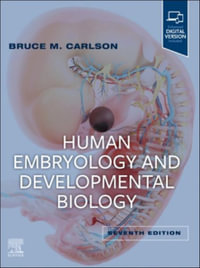
Biokinetics and Biodynamics of Human Differentiation
Principles and Applications
Hardcover | 15 May 2012 | Edition Number 1
At a Glance
Hardcover
$53.80
or
Aims to ship in 10 to 15 business days
ISBN: 9781583944523
ISBN-10: 1583944524
Published: 15th May 2012
Format: Hardcover
Language: English
Number of Pages: 312
Audience: General Adult
Publisher: RANDOM HOUSE US
Country of Publication: US
Edition Number: 1
Dimensions (cm): 22.9 x 15.2 x 2.3
Weight (kg): 0.68
Shipping
| Standard Shipping | Express Shipping | |
|---|---|---|
| Metro postcodes: | $9.99 | $14.95 |
| Regional postcodes: | $9.99 | $14.95 |
| Rural postcodes: | $9.99 | $14.95 |
How to return your order
At Booktopia, we offer hassle-free returns in accordance with our returns policy. If you wish to return an item, please get in touch with Booktopia Customer Care.
Additional postage charges may be applicable.
Defective items
If there is a problem with any of the items received for your order then the Booktopia Customer Care team is ready to assist you.
For more info please visit our Help Centre.
You Can Find This Book In
This product is categorised by
- Non-FictionMedicinePre-Clinical Medicine & Basic SciencesHuman Reproduction, Growth & DevelopmentReproductive MedicineEmbryology
- Non-FictionScienceBiology, Life SciencesHuman Biology
- Non-FictionScienceBiology, Life SciencesDevelopmental Biology
- FictionModern & Contemporary Fiction
- Non-FictionSports & Recreation
- Non-FictionMind, Body, SpiritComplementary Therapies, Healing & Health
- Non-FictionScienceScience in General























